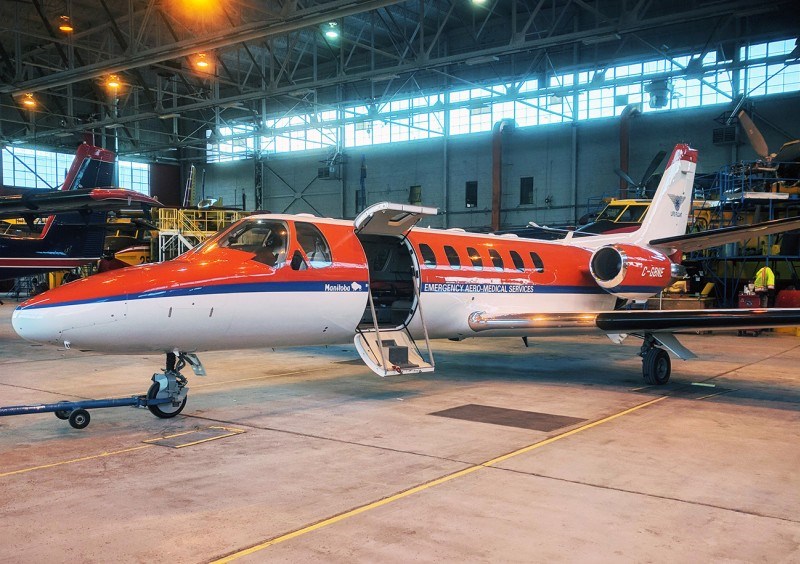The provincial government announced June 6 that the Lifeflight air ambulance program for critically injured patients outside a 200-kilometre radius of Winnipeg will no longer be using two government-owned Citation as early as this month.
The province says this is because recruiting for highly specialized positions related to operating these jets is difficult due to the specific training and qualifications required along with significant competition from private-sector employers.
The government-owned jets were used in about 50 per cent of Lifeflight missions last year.
In 2016-17, privately operated air ambulances transported 6,575 patients, while publicly operated air ambulances including helicopters, the Southern Air Ambulance program and Lifeflight, transported a total of 1,331, about 20 per cent as many.
The provincial government says only one province has a fully government owned and operated air ambulance service and that most jurisdictions in Canada use privately owned and operated air ambulance services.
“This was widely predicted and risks being a serious downgrade in service,” said Manitoba Liberal leader Dougald Lamont. “The Pallister government has been reckless in handling emergency services and the argument ‘everyone is doing it’ says nothing about whether it is effective or even works. If these jets are being replaced by private turboprops, this is a serious downgrade in service. Private aircraft cannot land in over two dozen northern communities and turboprops take hours longer. The PCs have bungled this file. Pilots started to bail after the PCs threatened to privatize, destabilizing the service."
Manitoba Government and General Employees’ Union (MGEU) president Michelle Gawronsky said issuing a request for proposals to provide air services to the government in July 2018 made it even more difficult to hang on to qualified staff.
“Once they did that, staffing became a challenge under this cloud of uncertainty and the government used the crisis it had created to justify privatizing this essential service,” she said, noting that flight nurses, pilots, maintenance crews and doctors expressed concern about plans to privatize air ambulance services.
“It is absolutely shameful that this government would not listen to the doctors, the nurses, the pilots, and the maintenance staff who have all – for months now – been telling them this is a risky move,” said Gawronsky. “Patient and crew safety should always come first. Today the government has made it clear that they feel differently.”
Manitoba Keewatinowi Okimakanak (MKO), which represents a couple dozen Northern Manitoba First Nations, thinks the government’s plan is unsound.
“This is highly problematic,” said MKO Grand Chief Garrison Settee in a press release. “Citation aircrafts are able to land safely on the short gravel runways that are common in many of our First Nations. Private jets may be unable to land and safely take off from many of our First Nations – which means our citizens may be unable to access life-saving health services during times of medical distress. The changes the province is making unilaterally are completely unacceptable. We are concerned that by privatizing these services, safety will be compromised. MKO had reached out to the province of Manitoba in February and we never heard back about our request to meet on this critical issue. I am once again urging the province to work with us. We need to collaborate and work together to ensure health services are accessible and do not cause undue harm to citizens living in Northern Manitoba.”




